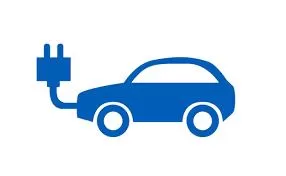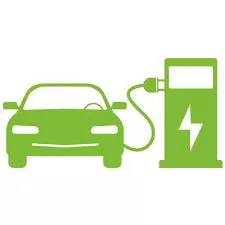
Range anxiety is no longer the only power-related concern when it comes to electric vehicle (EV) design and adoption. Autonomous or not, cars are getting smarter. Like any computer, modern EVs keep overall power consumption in mind, even as charging technology evolves to be faster, smarter, and more ubiquitous.
The average driver of an EV expects to be able travel farther without a charge, whether it’s within an urban area or on a longer inter-city trip on rural roads and highways. Charging needs to be easier and faster — finding a charging station should be no different than finding a gas station to quickly top off the vehicle with enough power to get them to where they need to go. In the meantime, EVs are getting smarter as advanced driver-assistance system functionality and infotainment features are added, all of which consume power.
Today’s EV ultimately requires smarter on-board–charging capabilities, easily accessible charging infrastructure, and designs with reliable electronics that consume less power while lasting as long as the car is on the road. AG ELECTRICAL is dedicated to making every effort to this. If you take interest in our products, do contact us for more information.

Fast-charging EV infrastructure, on-board charging, and lower-power memory and storage devices for the data that supports the increasing smarts in all vehicles are all major challenges affecting EV adoption and design today.
The type of vehicle also influences the available charging infrastructure — the demands for private and public vehicles differ. A public vehicle such as a bus travels more miles a day compared with a personal vehicle, for example. And a smaller bus will require shorter charging times than a large one. What the vehicle carries also has an impact on charging. In the same way that heavier vehicles consume more fuel to move their cargo, large vehicles transporting heavy goods will require more energy to keep moving and will have different charging requirements than a smaller, personal vehicle. Regardless, charging for all types of vehicles must be ubiquitous.

Fast-charging infrastructure must be built in greenfield locations in both urban and less populated settings, including the side of major highways, while also meeting the requirements of many different stakeholders. In addition to addressing the concerns of drivers who expect the same charging experience everywhere they go, there are businesses looking to build their own fleet of EVs, while condo towers and commercial properties such as malls may want to offer charging capabilities to residents and consumers. Municipalities, meanwhile, must consider the impact of charging infrastructure on their power grids, which are typically a mix of decades-old equipment and new systems, while figuring out how to integrate chargers into centuries-old historic neighborhoods as cleanly as they are at service stations.
Any charging infrastructure must be able to accommodate several different modes, including vehicle-to-grid (V2G), which allows for smart charging and setting additional features such as charge rates to improve efficiency as well as allowing for bidirectional flow of electrical energy between the vehicle and the grid. Meanwhile, vehicle-to-home (V2H) and vehicle-to-building (V2B) modes can help to balance energy for stakeholders such as municipalities and utilities. As a professional
electric vehicle charging companies, AG ELECTRICAL has various types of ev charging products, for example , our GBT EV Charging products, CHAdeMO Plug/Connector, sae j1772 products and so on.

Given how much investment that charging infrastructure takes in terms of time and money, it also needs to anticipate future requirements and customer experience expectations. It must be rugged, compact, connected, and flexible enough to connect with any vehicle and withstand any weather conditions around the world, no matter how hot, cold, dusty, or wet.

Technologies such as silicon carbide (SiC) MOSFETs and diodes play a key role in ticking all the boxes for designers, drivers, businesses, and municipalities because SiC-based solutions are light and compact, faster, more sustainable, and resilient. They allow for smaller, faster charging stations with fewer components, offer better energy efficiency to assuage concerns of municipalities and utility companies, and can be integrated into a wide variety of environments. Most importantly, drivers can expect a 30-minute-or-less charge time, bringing EVs in line with their gasoline-fueled counterparts so they can confidently travel within their city or take a road trip. They are also future-proof to allow e-commerce capabilities for retailers to be integrated into the charging station, as well as bidirectionality support that enables smart-grid applications.
EVs’ charging capabilities have a role to play as they evolve to better interact with power grids. They are already increasingly being equipped with lighter, high-power–density batteries to increase their range, as well as bidirectional on-board chargers that can help to replenish the grid when necessary and help with load-balancing the overall electric infrastructure of a city. At the same time, this allows the vehicle’s battery to be cycled, as keeping it fully powered all the time wears out the components quickly if they are always in a stage of charge.

A bidirectional on-board charger moves power back and forth efficiently with minimal loss. Like fast-charging infrastructure, it also benefits from SiC MOSFET technology, as the on-board charger can balance high density with high efficiency and provide a wide output voltage range in both charging and discharging modes. SiC MOSFETs are also beneficial from a thermal management perspective, whether it’s for fast-charging infrastructure or an on-board charger.
Even as EVs employ more wireless networking to support autonomy and other infotainment features, the charging scenarios are becoming more diverse and smarter. They must also think about the vehicles of tomorrow, not just today, while balancing the concerns of all stakeholders in the ecosystem. Standards and regulatory frameworks must continue to evolve to meet the concerns of those who want to adopt EVs for either personal or business use, and smarter charging technologies with proven reliability and efficiency will win the day.
Thank you for reading, all the pictures shown in this article are from AG.